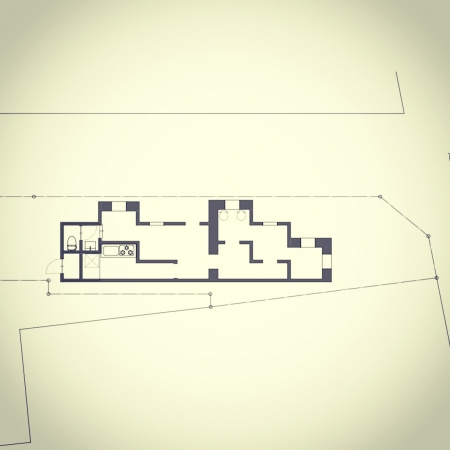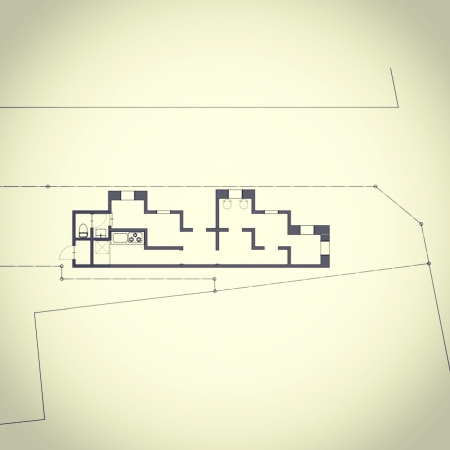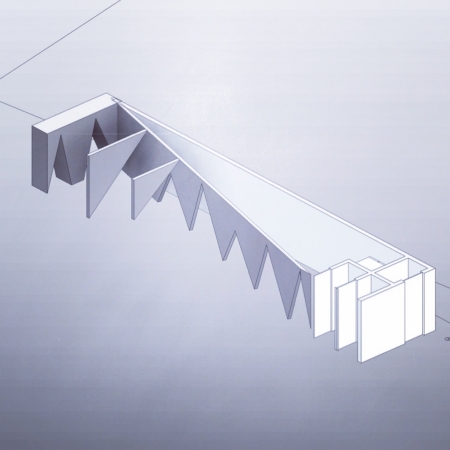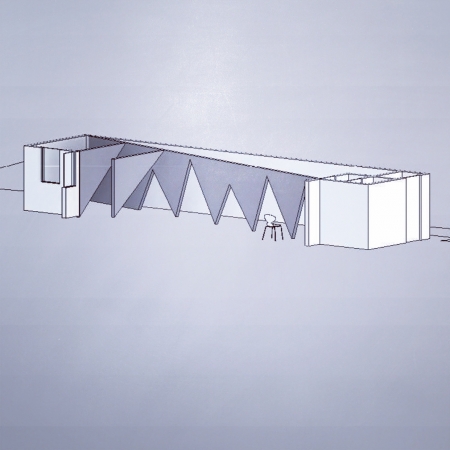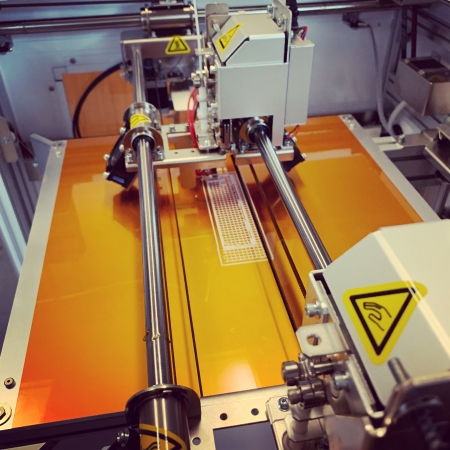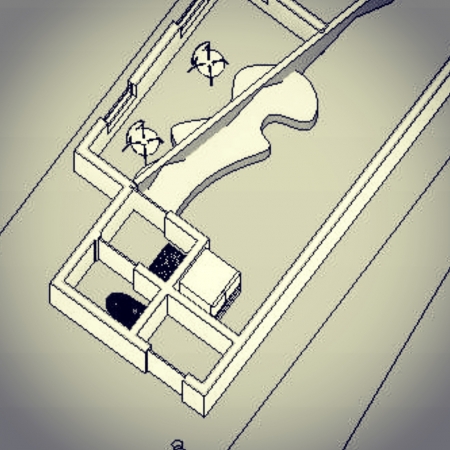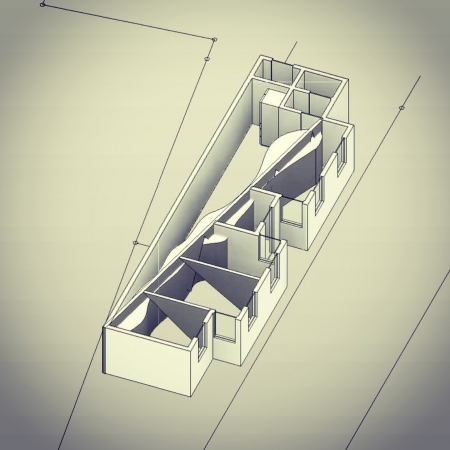人は物を介して空間を認識するということ。空間は空気みたいもので、それ自体を直に感じることはできない。しかし、壁や床や天井があり、それらに囲まれることによって空間を感じる取ることができる。
だから、物で空間を感じ取ってもらうために建築をつくる。では、その物は壁や床や天井だけだろうか、他に空間を認識させる物はあるだろうか。
ずっと考えているのが壁の厚みである。壁は空間を認識させるものだから、その厚みも当然そこに含まれてしまうし、そもそも壁の厚みを意識することがほとんどないだろうし、あるとしても設計と工事の時ぐらいだけかもしれない。
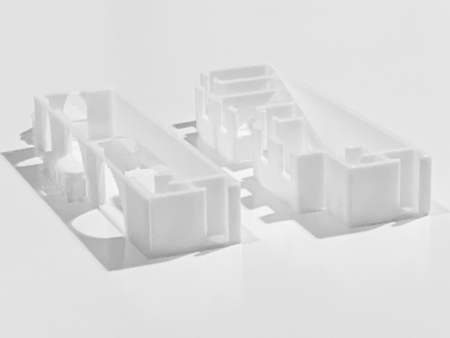
だけれども、壁の厚みが違うことで影響があるのではないだろうか。床や天井では厚い薄いはいわないが、壁だけが「壁が薄い」「壁が厚い」などという、それは大体音の問題があった時だが、音は壁からだけ伝わってくる訳では無いから、壁だけを特別視し、その厚みの違いを識別し、それが引き起こす状況を認識しようとする意識が人の中にあるのだろう。ならば、壁の厚みの違いで空間の認識に差が出るはずである。
壁の厚みの違いと空間の認識の関係を探るのも設計のうちである。
"Differences in space due to differences in wall thickness"
People recognize space through things. Space is like air, and you can't feel it directly. However, there are walls, floors, and ceilings, and you can feel the space by being surrounded by them.
Therefore, we create architecture so that people can feel the space. Then, is that thing only a wall, floor, or ceiling, or is there another thing that makes us recognize the space?
I have been thinking about wall thickness for a long time. Since the wall recognizes the space, its thickness is naturally included in it, and there is almost no awareness of the thickness of the wall in the first place, and even if there is, it may be only at the time of design and construction.
However, it may be affected by the different wall thickness. I don't say it's thick or thin on the floor or ceiling, but when there is a problem with sound, such as only the wall being "thin wall" or "wall thick", the sound is not only transmitted from the wall. Perhaps there is a consciousness in the person who pays special attention to the wall, identifies the difference in thickness, and recognizes the situation caused by it. If so, the difference in wall thickness should make a difference in the perception of space.
It is also part of the design to explore the relationship between the difference in wall thickness and the perception of space.


